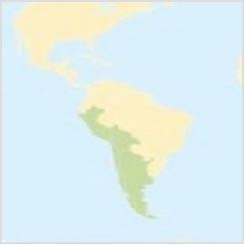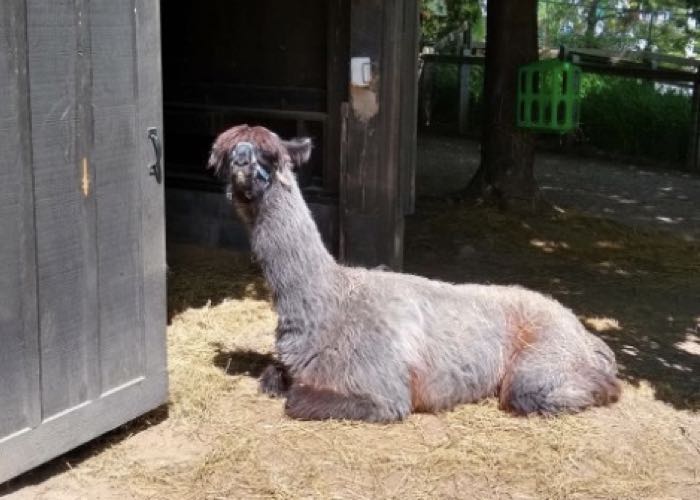Llama
Llam glama
Conservation Status: Not Endangered
Characteristics:
- Llamas are domestic animals used by the peoples of the Andes Mountains.
- Their wild relatives are guanacos and vicunas.
- The height of an adult llama will average 5-6 feet and they weight between 250 and 400 lbs.
- Llamas are covered with a double coat of fiber that consists of a dense under fleece and a second protective coat of coarse guard hair.
Lifespan: 15 to 30 years.
Range and Habitat:
- The Andean highlands, especially the Altiplano of southeast Peru and western Bolivia, is the natural habitat of the llama.
- The plateaus are covered with low growth, including various shrubs, stunted trees, and grasses.
- Their native range is all along the Andes mountains, but are no longer found in the wild.
- Llamas are now found commercially throughout North America, Europe and Australia.

Diet:
- Llamas like to graze on grass, and like cows, regurgitate their food and chew it as cud.
- They chomp on such wads for some time before swallowing them for complete digestion.
- Llamas can survive eating many kinds of plants, and they need little water.
Behavior:
- Llamas are herd animals that have a strong social structure.
- They are bold, inquisitive, and intelligent.
- They have an exaggerated territoriality compared to most species. Male llamas hold the strongest drive to establish and hold territory.
- When territorial challenges occur between llamas they are directed at the head/ears, forelegs, and flanks via biting and kicking.
- In the presence of humans, llamas will be relaxed until contact is initiated at which time they may withdraw out of reach.
Fun Facts:
- They are a South American relative of the camel, thought they do not have a hump.
- Llamas know their limits. If you try to overload a llama with too much weight, the llama will lie down or simply refuse to move.
- Llamas do not bite. They spit when agitated but that’s mostly at each other.
- A friendly llama that is interested in you will come right up to your mouth to smell your breath. That is how they learn more about you and remember who you are the next time they see you.
Keeper Notes:
Sinbad was born in 2004. He came to the zoo in 2011 as a donation from a private individual. Sinbad is a large male with a black coat. In the nice weather, Sinbad and his pal Goliath enjoy going for walks around the park to get some exercise and most importantly clover and grass.

